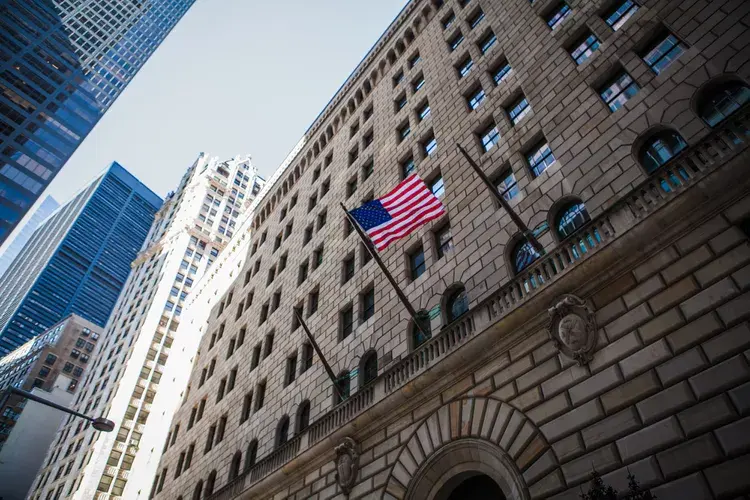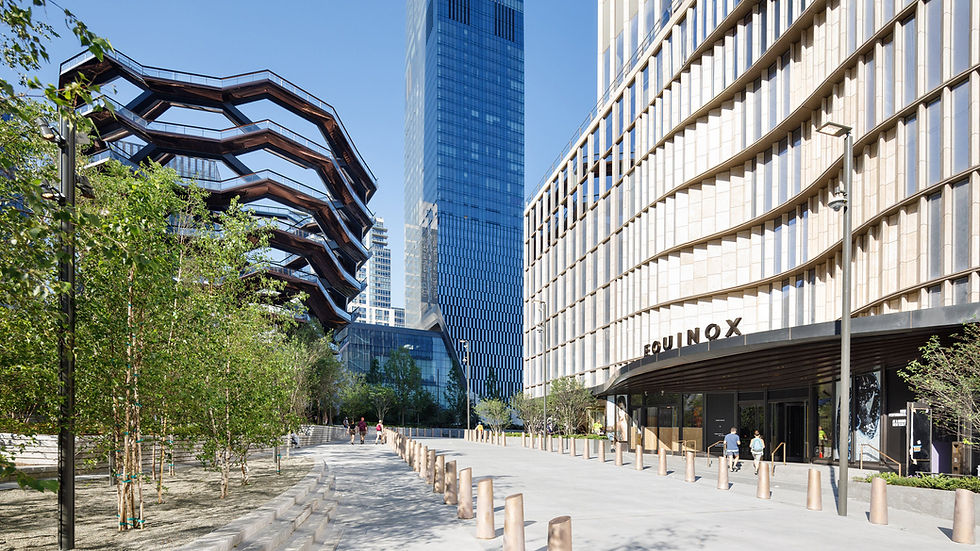Weekly Market Report - October 28, 2022
- Norman Bobrow

- Oct 28, 2022
- 4 min read
***
An analysis of surveys from major brokerages indicates that demand for flexible office space will continue to grow in coming years. More than 1,000 corporate real estate decision-makers found that 43% of firms plan to increase investment in flex space through 2025. While only 17% of U.S. occupiers report that flex space is a significant portion of their real estate portfolios today, 59% said that it will be significant within the next two years. It’s not only C-suite decision-makers driving demand, however, but workers as well.
People in WeWork offices currently spend 40% of their work time in the flex space but want to increase that to 55% in the future. Established industry participants are also increasing their footprints. Over the summer, IWG, the parent company of both Regus and Spaces, announced it would be adding at least 500 U.S. locations with a focus on smaller cities and the suburbs. Between its two brands, IWG already has upward of 1,000 coworking locations in markets covered by CommercialEdge. WeWork, the second-largest operator, has more than 250 spaces. The shift to hybrid work is also leading owners to consider operating their own coworking spaces in an effort to restore occupancy and cash flow.
Boston Properties has rolled out FLEX by BXP in a handful of its buildings and Irvine Company offers Flex Workspace+. However, smaller landlords may be wary of the large capital expenses that come with building out high-quality flex space and may look to dedicated operators instead. Management agreements which allow owners and flex space operators to share revenue could become a common solution.
***
Kastle tracks security card swipes at buildings in the 10 biggest cities across the country, but it doesn't track buildings owned or managed by SL Green, Vornado, Tishman Speyer, Rudin Management, Silverstein Properties, Brookfield, Boston Properties, Related or Rockefeller Group. Combined, those landlords own tens of millions of square feet and many of the newest trophy towers in the city, such as Hudson Yards, One Vanderbilt, the World Trade Center and Manhattan West. Kastle fully tracks only one of the city’s 10 biggest portfolios. The Partnership for New York City's return-to-work survey shows 50% average Manhattan weekly occupancy. Kastle’s latest report shows occupancy of 47.8% compared to pre-pandemic levels, a significant jump from 43.8% the previous week.
Tensions have been brewing through most of the year as corporate and political leaders have been pushing workers to come back to their offices more often, but many workers have refused. Labor Day this year didn't bring a large jump in office occupancy, but companies are increasingly mandating workplace returns — which many in real estate expect will push occupancy up further by the end of the year. Kastle's tracker hit a new high nationwide last week, measuring 49% of pre-pandemic occupancy. New York had the biggest week-to-week jump, climbing from 43.8% to 47.8%, but every city tracked saw an uptick of at least half a percentage point.
***
Demand for office space around the United States has softened the past year, with average asking rents dropping and vacancies spiking in many markets. The average asking rent was $37.67 per square foot in September, down 2.4 percent year-over-year, and the national vacancy rate was 16.6 percent, 180 basis points higher than in September 2021. 139.1 million square feet of new office supply are currently under construction around the country. But since the COVID-19 outbreak began, the geographic composition of new office construction has shifted, with gateway markets recording the largest declines.For example, Los Angeles had 3.6 million square feet of office projects start construction in 2019, but this year only 61,000 square feet of non-owner-occupied office space has begun construction. In the same period, newly started projects in Manhattan declined from 3.2 million square feet to just 754,000 this year; and Washington, D.C.’s construction volume dropped from 4.7 million square feet to 1.1 million.
The widespread push around the country toward remote and flexible work schedules has also increased demand for flex office space and demand will continue to grow as brokerages take notice and increase their investments in coworking space. $69.3 billion in U.S. office sales through September, including $13 billion in the third quarter alone. The Washington, D.C., market has been one of the most active with $4.1 billion in office deals so far. For comparison, Washington, D.C., notched $4.5 billion in sales in each of the previous two years.Manhattan has completed $5.46 billion for an average of $858 per square foot after three quarters. Miami has completed $1.25 billion at $393 per square foot, and Greater Los Angeles has completed $2.89 billion at an average of $447 per square foot so far this year.
***
SL Green and casino monger Caesars Entertainment have teamed up to bring a shiny new Caesars Palace to 1515 Broadway in Times Square. The companies are rustling up support — and encountering opposition — from the casino’s would-be neighbors in the city’s entertainment heart. The proposed casino would be built at SL Green’s West 44th Street skyscraper, which also houses the Minskoff Theater — home to “The Lion King” on Broadway — and Viacom’s world headquarters. Developers jumped to make plans after lawmakers announced in April up to three casino licenses were on the table for the New York City area. Two of the spots are likely to be racetracks-plus-slot-machine locations: Genting Group’s Resorts World New York City in Queens and MGM Resorts International’s Empire City Casino in Yonkers.
SL Green and Caesars appear to be competing for the third with Related Companies, which has proposed partnering with Wynn Resorts to build a casino in Hudson Yards, and with Mets owner Steven Cohen, who wants to put a Hard Rock casino near his team’s baseball stadium in Queens, Citi Field. The SL Green-Caesars plan faces opposition from influential trade association the Broadway League, which says a casino would threaten the Times Square neighborhood and its already precarious theater economy. SL Green and Caesars are trying to sweeten the pot for its neighbors by saying that the casino would bring additional security to Times Square in the form of 50 artificial intelligence surveillance cameras and additional safety officers.









Comments